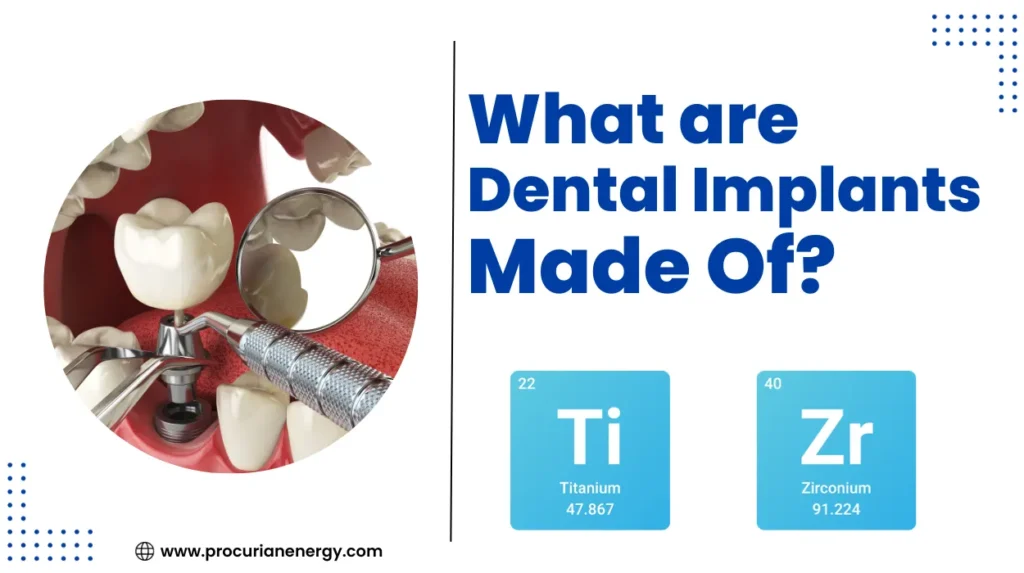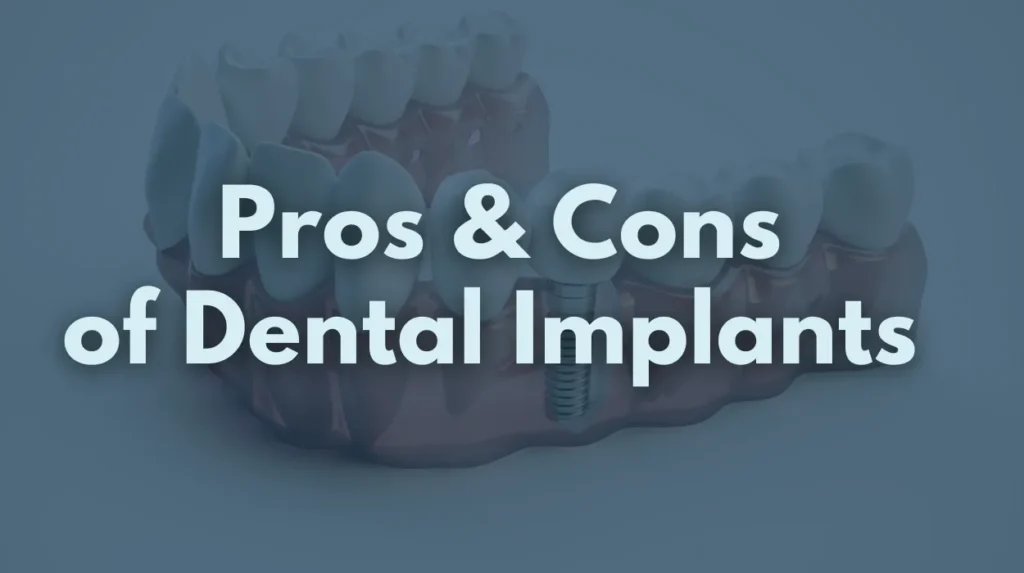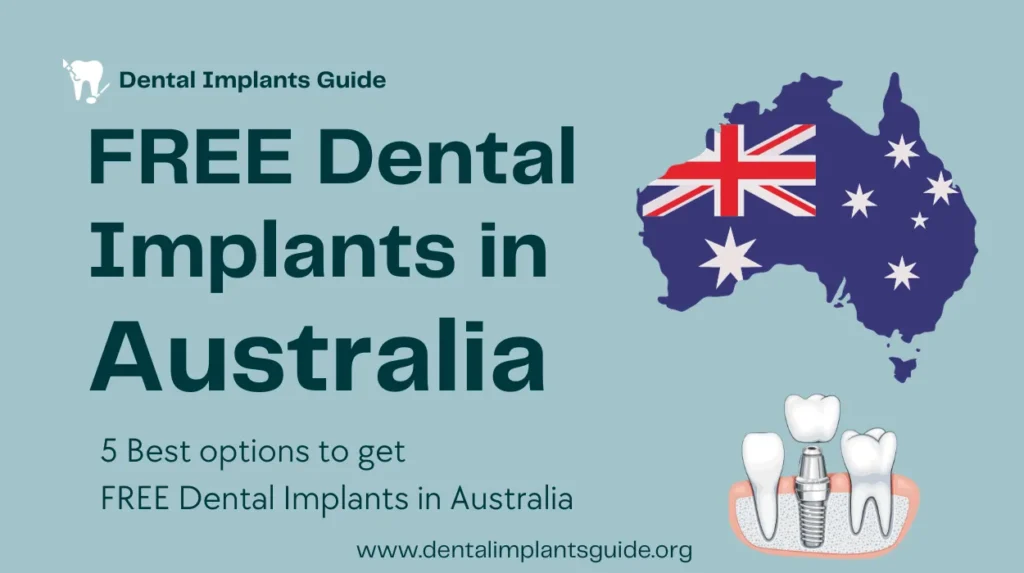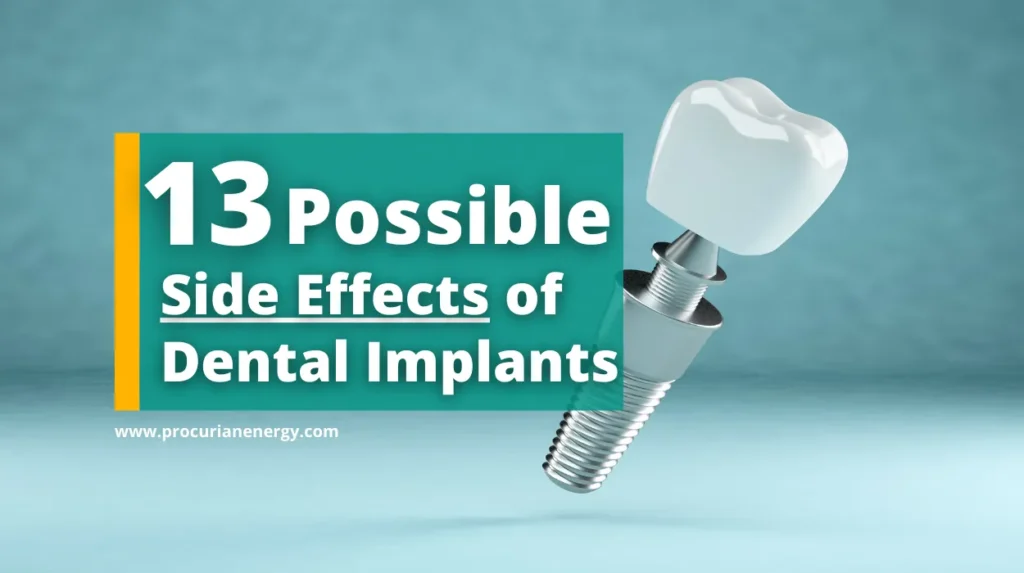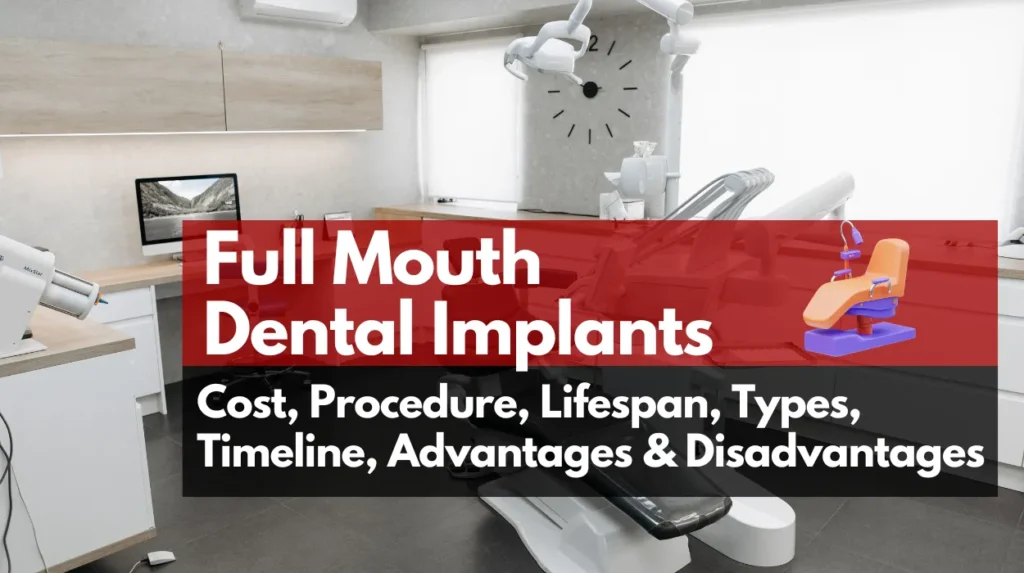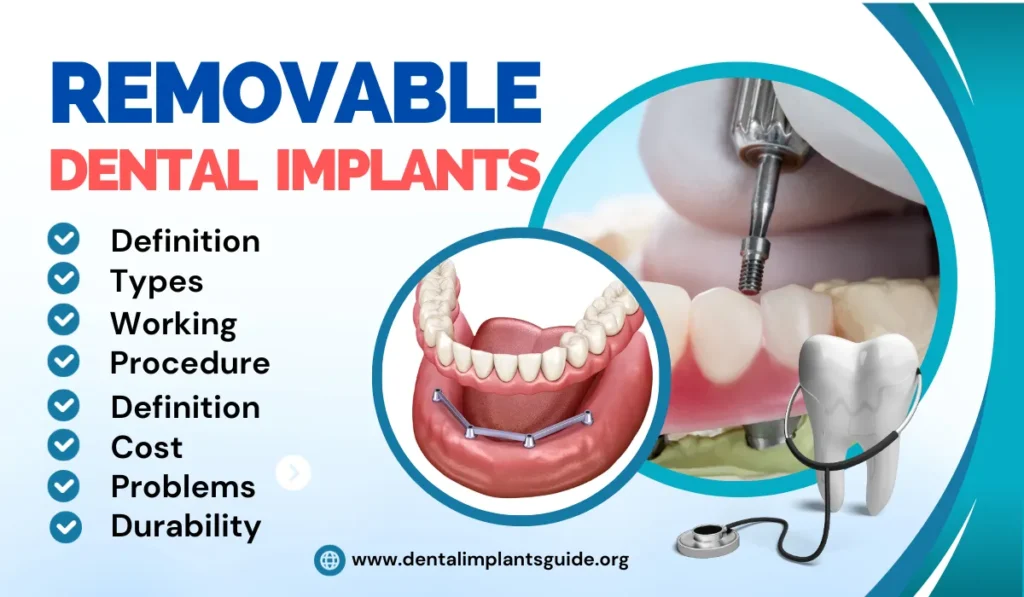When it comes to dental health, taking care of your teeth is very much important. Dental implants may be required on occasion to restore your smile’s radiance and replace missing teeth.

The first question that comes to mind when considering dental implants as a way to restore your smile is, “How much do dental implants cost?“
You’re in the right place, then! We’ll break down dental implant costs in this blog post to give you a clear idea of what to expect.
What Are Dental Implants?
In order to support replacement teeth, dental implants are artificial tooth roots made of titanium that are surgically inserted into your jawbone.
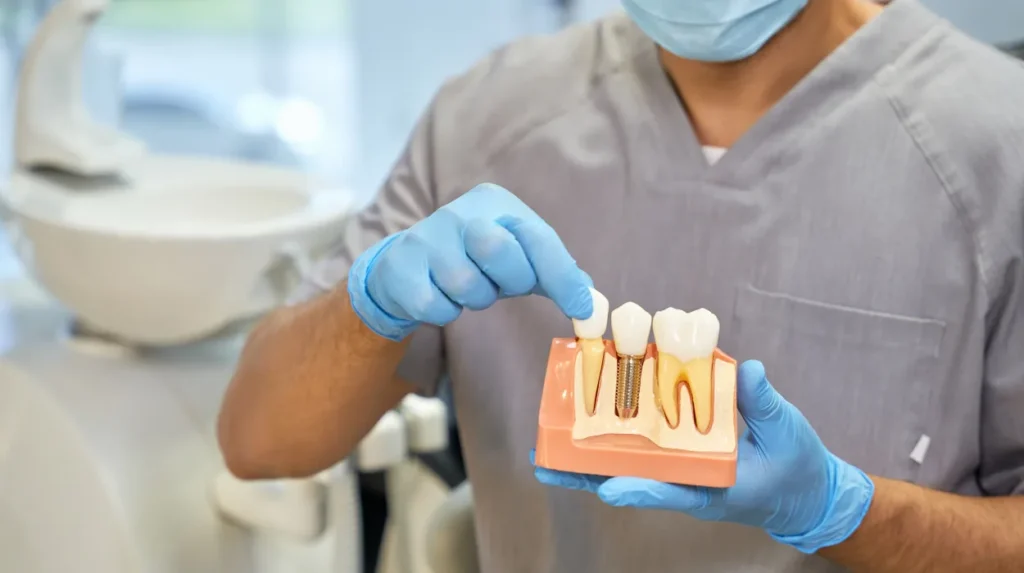
Dental implants provide a durable and long-lasting solution for people who are missing teeth. Thanks to dental implants, you can eat, speak, and smile with confidence because they function and look exactly like natural teeth.
The Cost of Dental Implants
Dental implant costs can vary widely based on several factors, including where you live, the number of implants you need, and the type of implant you choose.
Here is a table with estimated costs to give you a general idea:
| Type of Dental Implant | Average Cost in the USA |
|---|---|
| Single Tooth Implant | $3,000 – $6,000 |
| Implant-Supported Bridge | $4,000 – $15,000 |
| Full Mouth Implants | $20,000 – $45,000 |
| Full Arch Implants (All-on-4 or All-on-6) | $15,000 to $30,000 per arch |
| Implant-Supported Dentures | $7,000 to $30,000 |
Cost of Dental implants in different states
| State | Single Tooth Implant | Implant-Supported Bridge | Full Mouth Implants |
|---|---|---|---|
| Alabama | $3,000 – $6,000 | $4,000 – $15,000 | $20,000 – $45,000 |
| Alaska | $3,500 – $7,000 | $4,500 – $16,000 | $22,000 – $50,000 |
| Arizona | $3,000 – $6,500 | $4,000 – $15,000 | $20,000 – $45,000 |
| Arkansas | $2,800 – $6,200 | $3,800 – $14,000 | $18,000 – $40,000 |
| California | $3,500 – $7,000 | $4,500 – $16,000 | $22,000 – $50,000 |
| Colorado | $3,200 – $6,800 | $4,200 – $15,500 | $21,000 – $47,000 |
| Connecticut | $3,500 – $7,500 | $4,500 – $16,000 | $22,000 – $52,000 |
| Delaware | $3,200 – $6,800 | $4,200 – $15,500 | $21,000 – $47,000 |
| Florida | $3,000 – $6,500 | $4,000 – $15,000 | $20,000 – $45,000 |
| Georgia | $3,000 – $6,500 | $4,000 – $15,000 | $20,000 – $45,000 |
| Hawaii | $3,500 – $7,000 | $4,500 – $16,000 | $22,000 – $50,000 |
| Idaho | $2,800 – $6,200 | $3,800 – $14,000 | $18,000 – $40,000 |
| Illinois | $3,200 – $6,800 | $4,200 – $15,500 | $21,000 – $47,000 |
| Indiana | $3,000 – $6,500 | $4,000 – $15,000 | $20,000 – $45,000 |
| Iowa | $2,800 – $6,200 | $3,800 – $14,000 | $18,000 – $40,000 |
| Kansas | $3,000 – $6,500 | $4,000 – $15,000 | $20,000 – $45,000 |
| Kentucky | $3,000 – $6,500 | $4,000 – $15,000 | $20,000 – $45,000 |
| Louisiana | $3,200 – $6,800 | $4,200 – $15,500 | $21,000 – $47,000 |
| Maine | $3,200 – $6,800 | $4,200 – $15,500 | $21,000 – $47,000 |
| Maryland | $3,500 – $7,500 | $4,500 – $16,000 | $22,000 – $52,000 |
| Massachusetts | $3,500 – $7,500 | $4,500 – $16,000 | $22,000 – $52,000 |
| Michigan | $3,000 – $6,500 | $4,000 – $15,000 | $20,000 – $45,000 |
| Minnesota | $3,200 – $6,800 | $4,200 – $15,500 | $21,000 – $47,000 |
| Mississippi | $2,800 – $6,200 | $3,800 – $14,000 | $18,000 – $40,000 |
| Missouri | $3,000 – $6,500 | $4,000 – $15,000 | $20,000 – $45,000 |
| Montana | $3,200 – $6,800 | $4,200 – $15,500 | $21,000 – $47,000 |
| Nebraska | $2,800 – $6,200 | $3,800 – $14,000 | $18,000 – $40,000 |
| Nevada | $3,200 – $6,800 | $4,200 – $15,500 | $21,000 – $47,000 |
| New Hampshire | $3,200 – $6,800 | $4,200 – $15,500 | $21,000 – $47,000 |
| New Jersey | $3,500 – $7,500 | $4,500 – $16,000 | $22,000 – $52,000 |
| New Mexico | $3,000 – $6,500 | $4,000 – $15,000 | $20,000 – $45,000 |
| New York | $3,500 – $7,500 | $4,500 – $16,000 | $22,000 – $52,000 |
| North Carolina | $3,000 – $6,500 | $4,000 – $15,000 | $20,000 – $45,000 |
| North Dakota | $2,800 – $6,200 | $3,800 – $14,000 | $18,000 – $40,000 |
| Ohio | $3,000 – $6,500 | $4,000 – $15,000 | $20,000 – $45,000 |
| Oklahoma | $3,000 – $6,500 | $4,000 – $15,000 | $20,000 – $45,000 |
| Oregon | $3,200 – $6,800 | $4,200 – $15,500 | $21,000 – $47,000 |
| Pennsylvania | $3,200 – $6,800 | $4,200 – $15,500 | $21,000 – $47,000 |
| Rhode Island | $3,500 – $7,500 | $4,500 – $16,000 | $22,000 – $52,000 |
| South Carolina | $3,000 – $6,500 | $4,000 – $15,000 | $20,000 – $45,000 |
| South Dakota | $2,800 – $6,200 | $3,800 – $14,000 | $18,000 – $40,000 |
| Tennessee | $3,000 – $6,500 | $4,000 – $15,000 | $20,000 – $45,000 |
| Texas | $3,000 – $6,500 | $4,000 – $15,000 | $20,000 – $45,000 |
| Utah | $3,200 – $6,800 | $4,200 – $15,500 | $21,000 – $47,000 |
| Vermont | $3,200 – $6,800 | $4,200 – $15,500 | $21,000 – $47,000 |
| Virginia | $3,000 – $6,500 | $4,000 – $15,000 | $20,000 – $45,000 |
| Washington | $3,200 – $6,800 | $4,200 – $15,500 | $21,000 – $47,000 |
| West Virginia | $3,000 – $6,500 | $4,000 – $15,000 | $20,000 – $45,000 |
| Wisconsin | $3,000 – $6,500 | $4,000 – $15,000 | $20,000 – $45,000 |
| Wyoming | $3,200 – $6,800 | $4,200 – $15,500 | $21,000 – $47,000 |
Factors Affecting Dental Implant Costs
The cost of dental implants can vary based on several factors. Here are the main things that affect the price:
1. Location – Dental implant costs can vary from state to state and even within different cities. Urban areas generally have higher prices.
2. Number of Implants – The more implants you need, the higher the total cost. Single tooth implants are usually less expensive than full mouth restorations.
3. Implant Materials – There are different types of dental implants, and some materials may cost more than others. Discuss your options with your dentist.
4. Additional Procedures – If you need additional procedures like bone grafts or sinus lifts before getting implants, these will add to the overall cost.
5. Dentist’s Experience – Highly experienced implant specialists may charge more for their expertise.
Additional Costs
Apart from the implant itself, there are other costs you should consider:
- Consultation and X-rays – Typically $100 to $300.
- Abutment – This piece connects the implant to the replacement tooth. It can cost between $300 to $500.
- Bone Grafting – If your jawbone needs augmentation, this can add $250 to $3,000.
- Pre-Surgery and Post-Surgery Care – Consultations, X-rays, and follow-up visits can add to the overall cost.
- Anesthesia – If you need it, anesthesia might cost an extra $500 to $1,000.
- Extractions – Removing damaged teeth can cost $75 to $450 per tooth.
- Temporary Restorations – While waiting for permanent crowns, you may need temporary teeth, costing $200 to $600 each.
Also See: How to get FREE Dental Implants?
Dental insurance often covers a portion of implant costs, but it varies widely. Some plans cover part of the procedure, while others may not cover it at all. Be sure to check your insurance policy for details.
Financing Options
If you’re concerned about the cost, many dentists offer financing options to help you manage payments over time. This can make dental implants more affordable and accessible.
You can use these tax-advantaged accounts (Health Savings Accounts or Flexible Spending Accounts) to pay for dental implants.
What are the PROS and CONS of dental implants?
| Pros of Dental Implants | Cons of Dental Implants |
|---|---|
| 1. Natural Appearance | 1. Costly Investment |
| 2. Improved Chewing | 2. Surgery Required |
| 3. Durability | 3. Healing Time |
| 4. Preserve Jawbone | 4. Not Suitable for Everyone |
| 5. No Impact on Adjacent Teeth | 5. Maintenance Needed |
| 6. Improved Speech | 6. Time-Consuming Process |
| 7. High Success Rate | 7. Possible Complications |
| 8. Enhanced Self-Esteem | 8. Sensitivity to Temperature |
| 9. Versatile Options | 9. Time-Intensive Process |
| 10. Long-Term Cost Savings | 10. Not Covered by All Insurance |
How painful are tooth implants?
Getting tooth implants might make you wonder if it hurts. Here’s the simple truth: Yes, there can be some pain, but it’s usually manageable.
During the Procedure – Your dentist will use anesthesia, so you won’t feel pain during the implant surgery. Afterward, you might have some discomfort and swelling, but it’s like any other minor surgery.
After the Surgery – You might feel a bit sore for a few days. Over-the-counter pain relievers like ibuprofen can help with this. Most people find the pain to be less than they expected.
Healing Time – It takes some time for the implant to fuse with your jawbone. During this time, you might have some mild discomfort, but it’s not usually severe.
Also See: Why NO Dairy after Dental implant & What to Eat Instead?
What is the cheapest way to replace a missing tooth?
The cheapest way to replace a missing tooth is with a removable partial denture. It’s like a plastic or metal bridge that fits into your mouth and has a fake tooth on it. Dentists make these to match your other teeth, so they look natural.
While it’s the most affordable option, keep in mind that it’s not as sturdy or comfortable as other choices like dental implants or fixed bridges. You need to remove it for cleaning and while sleeping.
How long do teeth implants last for?
Dental implants can last a really long time, often for the rest of your life.
If you brush, floss, and visit the dentist regularly, your dental implants can stay with you for many years, giving you a beautiful smile and letting you chew your favorite foods without worries.
Important FAQs related to Dental Implant
What is the average cost of dental implants per tooth?
The average cost of a dental implant for one tooth can be around $3,000 to $5,000 in the USA.
How much is a tooth implant out-of-pocket?
The cost of a tooth implant out-of-pocket can range from $3,000-$8,000 per tooth in the United States
Why is one tooth implant so expensive?
One tooth implant can be pricey because it involves surgery, high-quality materials, and personalized care. Plus, it’s a long-lasting solution for a beautiful, functional smile.
Are dental implants stronger than teeth?
Yes, dental implants are usually stronger than natural teeth. They don’t get cavities and can last a lifetime with good care.
Is it worth replacing a molar with an implant?
Yes, replacing a molar with an implant is worth it. It helps you chew food properly, keeps other teeth in place, and can last a lifetime with good care.
Are dental implants easy to replace?
No, dental implants are not easy to replace. It involves surgery and can be complex. Prevention and good care are key to making them last.
Is it better to keep your teeth or get implants?
It’s usually better to keep your natural teeth if you can. Dental implants are great but keeping your own teeth is often the best choice for your overall oral health.



